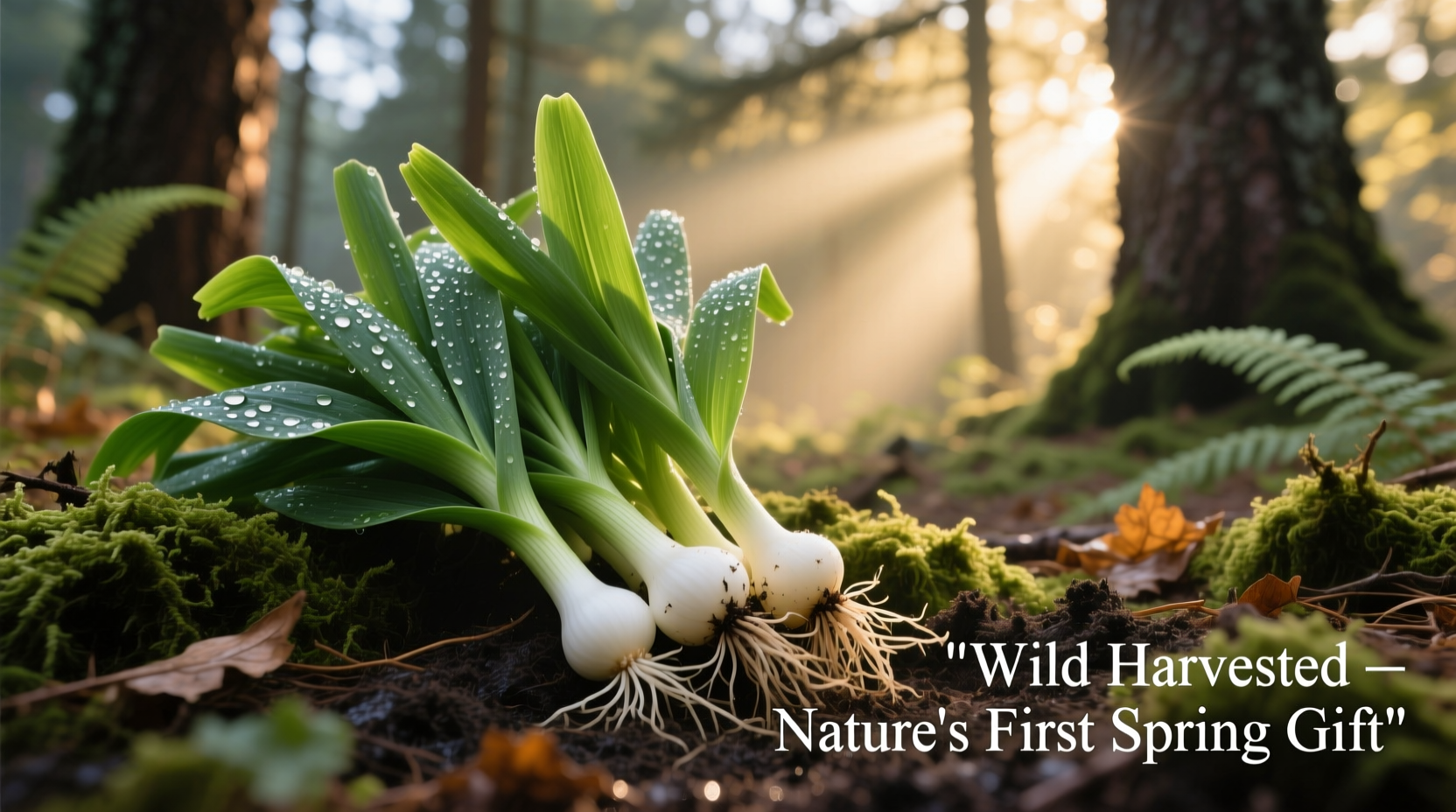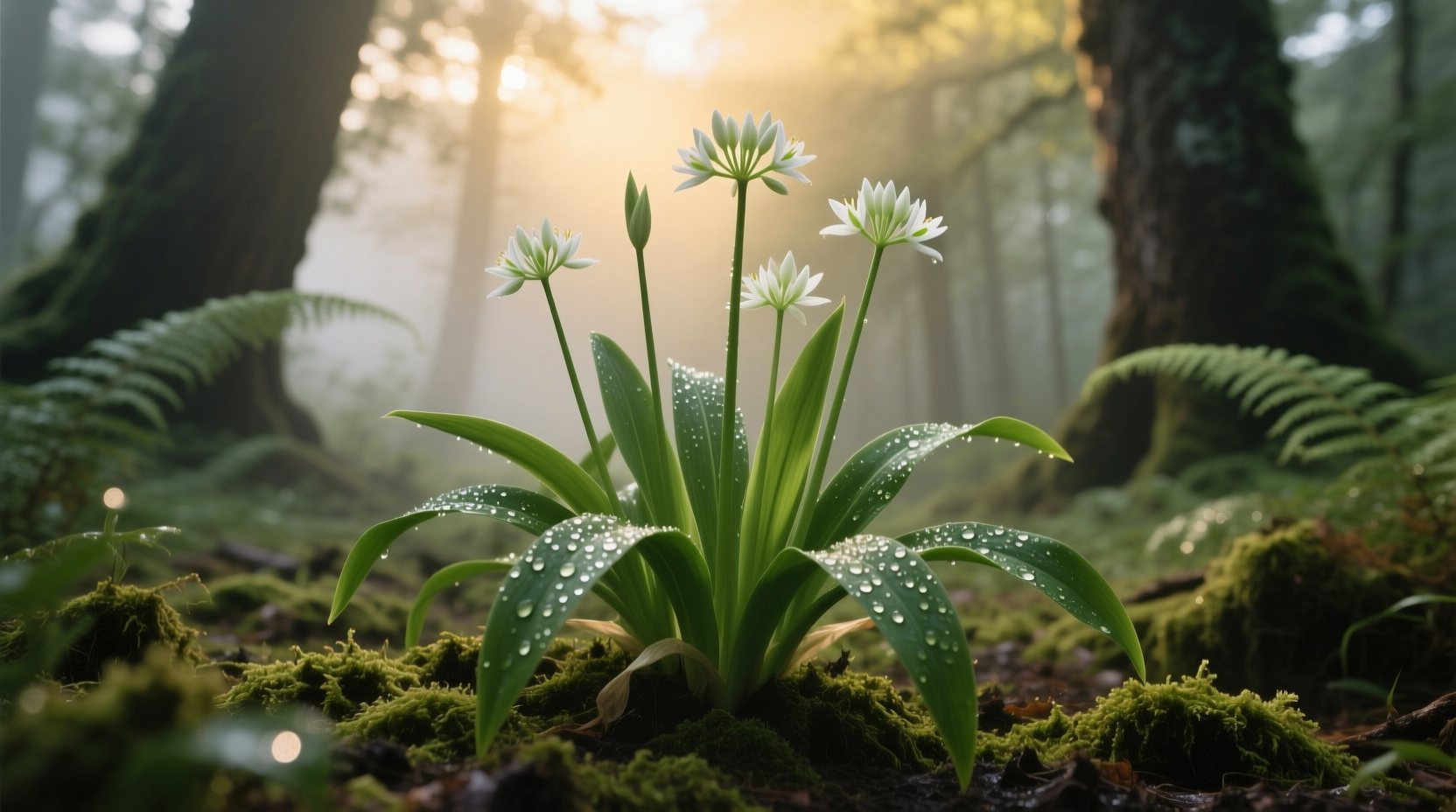Discover how to confidently identify, responsibly harvest, and deliciously prepare wild leeks with this comprehensive guide. Whether you're a beginner forager or experienced chef, you'll gain practical knowledge to safely incorporate these seasonal gems into your cooking while protecting fragile ecosystems.
Why Wild Leek Identification Matters
Mistaking toxic plants for wild leeks can have serious consequences. Each spring, emergency rooms treat cases of poisoning from confused foragers. The key difference? Wild leeks emit a distinctive onion-garlic aroma when crushed, while poisonous look-alikes like lily of the valley have no scent or a different odor.

Step-by-Step Identification Guide
Follow these verification steps before harvesting any wild plant:
1. Leaf Examination
Wild leek leaves are smooth, broad (1-3 inches wide), and emerge directly from the base with no stem. They're bright green when young, turning darker as they mature. The leaves grow in pairs of 1-2 per bulb.
2. Bulb and Root Check
Dig carefully to expose the bulb - wild leeks have a small white bulb with fine white roots. The base shows a distinctive sheath where leaves meet the bulb. This differs from lily of the valley's rhizomes and autumn crocus's corms.
3. The Crush Test
This is your safety checkpoint. Crush a small piece of leaf or bulb between your fingers. Wild leeks immediately release a strong garlic-onion scent. If there's no scent or it smells different, do not harvest.
| Plant | Leaf Characteristics | Bulb/Root Structure | Scent Test | Danger Level |
|---|---|---|---|---|
| Wild Leek (Allium tricoccum) | Broad, smooth, emerges from base | Small white bulb with fine roots | Strong garlic-onion aroma | Edible |
| Lily of the Valley | Narrow, parallel veins, grows in clusters | Rhizomes (underground stems) | No distinctive scent | Highly toxic |
| Autumn Crocus | Thin, grass-like, glossy | Corm (swollen stem base) | Slightly bitter, no onion scent | Deadly toxic |
Regional Harvesting Guidelines and Seasons
Wild leek availability varies significantly by region. Understanding local seasons prevents premature harvesting that damages populations:
- Appalachian region: Peak season mid-April to early May at lower elevations, extending to June at higher elevations
- Great Lakes region: Late April through May depending on snowmelt
- New England: Early May to early June, later in northern areas
- Canada (Quebec/Ontario): Late April to June, varying with latitude
The USDA Forest Service notes that wild leek populations have declined by up to 75% in some areas due to overharvesting and habitat loss. Their research shows sustainable harvesting requires strict adherence to the "one leaf" rule.
Sustainable Harvesting Practices
Responsible foraging ensures wild leek populations thrive for future generations. Follow these science-backed guidelines:
The One Leaf Rule
Take no more than one leaf per plant, leaving the bulb and second leaf intact. Research from Scientific Reports (2021) demonstrates this method allows plants to regenerate fully, while harvesting whole plants reduces population viability by 90% over five years.
Harvesting Limits
Never take more than 10% of plants in any patch. The North American Foraging Council recommends harvesting only from large, healthy populations with hundreds of plants visible within a 10x10 foot area.
Protected Areas
Many national and state parks prohibit wild leek harvesting entirely. Check local regulations before foraging - the National Park Service maintains updated foraging policies for all protected areas.
Culinary Applications and Preparation
Wild leeks offer unique flavor complexity that transforms simple dishes. Their delicate nature requires specific handling:
Proper Cleaning Technique
Gently rinse leaves and bulbs in cool water, removing any soil from the bulb base. Avoid soaking, which diminishes flavor. Pat dry with a clean towel - never use paper towels which can tear the delicate leaves.
Cooking Methods That Preserve Flavor
- Sautéing: Cook bulbs first in butter or oil for 2 minutes before adding leaves
- Grilling: Brush with oil and grill whole for 3-4 minutes per side
- Pickling: Preserve bulbs in vinegar brine for year-round use
- Pesto: Blend leaves with nuts, oil, and cheese for vibrant sauce
Flavor Pairing Guide
Wild leeks complement spring ingredients beautifully:
- With morels and other spring mushrooms
- In omelets with fresh goat cheese
- With roasted asparagus and new potatoes
- As a garnish for creamy soups
Storage and Preservation
Wild leeks are highly perishable. For maximum freshness:
- Store unwashed in a damp paper towel inside a perforated plastic bag
- Refrigerate for up to 5 days
- Freeze chopped bulbs and leaves in oil for cooking
- Pickle bulbs for 6+ months shelf life
Conservation Status by Region
Wild leek populations face different pressures across North America:
- Quebec: Legally protected; harvesting prohibited without special permit
- Appalachian states: Many areas have seasonal restrictions or harvest limits
- Midwest: Generally more abundant but still vulnerable to overharvesting
- Canada: Listed as threatened in several provinces due to commercial harvesting
The Center for Biological Diversity reports that wild leek populations have declined by approximately 60% in the eastern United States over the past three decades, primarily due to habitat loss and unsustainable harvesting practices.











 浙公网安备
33010002000092号
浙公网安备
33010002000092号 浙B2-20120091-4
浙B2-20120091-4